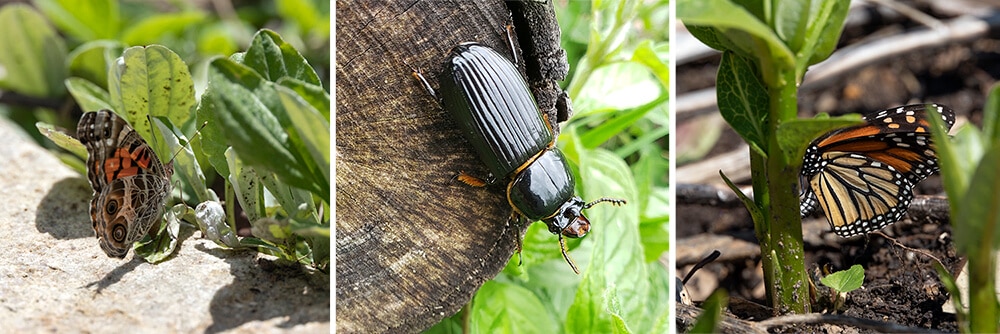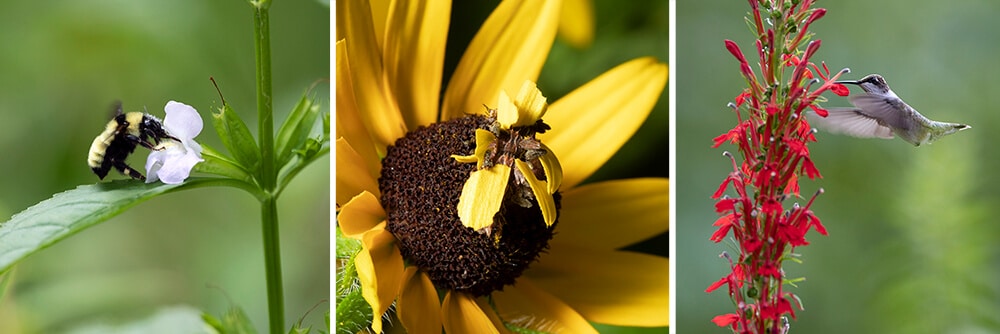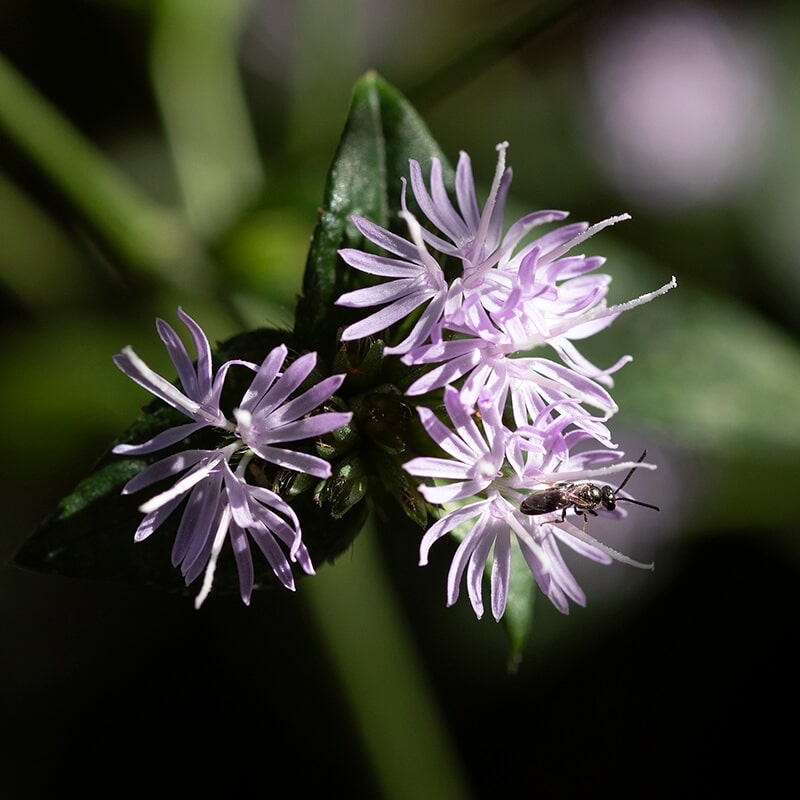Your Very Own Wildlife Habitat
Can Bring Relief to These Troubling Times
What a wild ride. The past eight months have been a roller coaster of unprecedented challenges—seemingly insurmountable ones at that. I think I can state with a fair amount of confidence that we’ve collectively experienced anxiety, frustration, and also heartbreak. Maybe a bit of anger too. These have been tough days.
Fortunately, there’s this wonderful thing called nature out there. Woodlands, meadows, wetlands … outdoor spaces that allow us to de-stress. There’s no doubt the pandemic has illuminated the value of such protected areas, at least for those of us lucky enough to live near them.

"Homegrown National Park"
I’ve had the luxury of spending many hours in some of these nearby natural areas, often to help destroy invasive plants. But a large chunk of my outdoor time is spent in my own personal sanctuary. While the mass movement to visit parks and to simply get outside continues, I experience that decompressing ahhhhhh feeling just footsteps from my door. On this quarter-acre lot four miles from Northern Virginia’s bustling Tysons Corner Center, essential native plants feed uncommon bumble bees, delightful monarch caterpillars, hungry migrating birds, and much, much more.

This habitat did not come about by accident, however. And it wasn’t created overnight. My garden-with-native-plants-or-die journey began about seven years ago with a lecture given by renowned entomologist Dr. Doug Tallamy. His groundbreaking research showed that native plants support all life, even our own. (Yay, science!)
This past February, right before the covid-19 pandemic changed the way we lived, Tallamy’s lecture circuit brought him once again in front of a massive audience in Manassas. His rousing message urged us to repurpose turfgrass with native plants to form our very own “Homegrown National Park.” Reducing just half of all lawns across the country this way would return more than 20 million acres of America to wildlife habitat. Twenty. Million. Acres.
A pandemic prognosticator, Tallamy listed these benefits of building a park at home:
1. You can enjoy nature on your own time at your own pace
2. Avoid crowds
3. It’s free
4. Avoid travel hassles
5. Experience the natural world alone
6. Hunt lizards!
And now there’s one more benefit:
7. Keep safe from droplets!
See what a Tallamy-inspired garden, enthusiastically documented over the past eight months of isolation, has attracted:








Let's Build It!
If you’re curious about how best to create your own private park, here are some environmentally-sound suggestions:
♥ Buy locally native plants to support our indigenous critters and to keep our wild areas ecologically intact. I like to frequent Earth Sangha’s plant list to choose my local ecotype plants. The Earth Sangha family is always happy to help you to select the right plants for your site conditions and your needs.
♥ If you have an appropriate location, plant native keystone plants such as white oak (Quercus alba) and wild black cherry (Prunus serotina). These trees are the two top supporters of Lepidoptera spp. (moth and butterfly) larvae.
♥ Remove invasive plants because they can escape from your yard into natural spaces. Getting rid of invasives on your property is equally as important as planting natives.
♥ Reduce lawn. Turfgrass is considered to be ecologically devastating because of the problematic way humans maintain it (use of fertilizers and weed killers) and because of how little life it supports. Lawn can add to stormwater runoff.
♥ Forgo the pesticides. Grub controls, mosquito sprays, and rodent poisons harm more than just the targeted “pests.”
♥ Leave the “leaf litter” to maintain plant and soil health and to harbor a variety of animals. Slugs, moths, and spiders are just as important as our enchanting fireflies and butterflies—which rely on leaf litter to survive.
♥ Strive to keep discarded plant material on your property. It takes resources to haul it away and process it.
♥ Use some of that unwanted plant material to build a brush pile for birds and small mammals.
♥ Leave a dead tree (called a “snag”) standing when feasible. Any size snag can support wildlife but leaving at least a six-foot-tall dead or dying tree feeds innumerable insects and can provide homes for woodpeckers and other animals.
♥ Allow branches and logs to rot in your garden or lug neighbors’ chain-sawed tree parts onto your property or do both! These logs make a lovely natural edging and are as enticing to insects as snags are.
♥ Keep outdoor lights off to help moths, birds, and bats. Yellow LED light bulbs in a motion-activated fixture are also a good solution. Note that some studies show that residential exterior lights do little to prevent crime.
Although the landscape I nurture is still fluid and an ongoing labor of love (yes, my garden is much more work than lawn is), it has from the get-go provided valuable eco-services. I recommend taking on small sections at a time. Begin by planting lower-maintenance trees and shrubs. Then just add water. And love.

There’s never been a better time or reason to create your own oasis. Even if you have only a patio or a balcony, a few native plants grown in containers can attract and support a variety of teeny animals such as our native bees and caterpillars. Let’s help the critters we are passionate about and also help ourselves.
The Movement is ON! HOMEGROWN NATIONAL PARK™ has officially launched.
For more of Tallamy’s philosophy, see: April 2020 Smithsonian Magazine interview, “Meet the Ecologist Who Wants You to Unleash the Wild on Your Backyard.”
Originally written for the Arlington Regional Master Naturalists.
